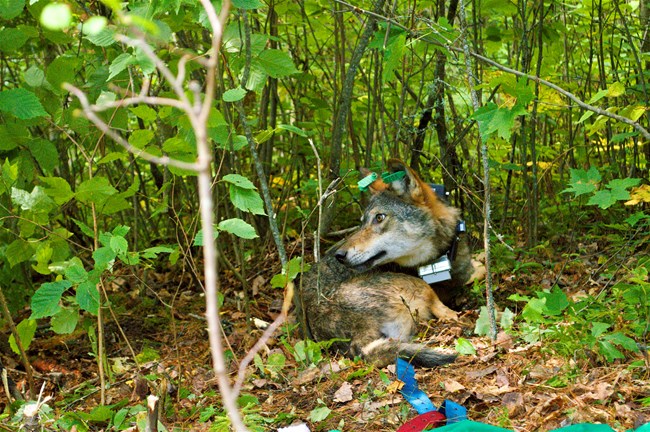
Photo by Tom Gable
The scientists identified clusters of GPS locations visited by V009 using ArcGIS 10.2. A cluster was defined as consecutive locations that were within a 200 meter area for four hours. They then visited those locations to document kill sites. Additionally they used ArcGIS to determine the number of
clusters they did not search and to estimate how many of those were likely in active beaver habitat. (Clusters were considered in active beaver habitat if at least 50% of the cluster locations were within 30 meters from water.)
Steve and Tom documented 12 beaver kills by V009 during the ice-free season that year, and estimated that the wolf killed 22 beavers during the same period. Based on the number of beavers killed by V009, they were then able to estimate the number of beavers killed by the entire Ash
River Pack to be between 80 – 88 beavers. That represented a kill rate of 0.085-0.095 beavers/wolf/day.
Despite the fact that those 80 – 88 beavers killed represented 38 – 42% of the beaver population in their home range during that season, the beaver population in the Ash River Pack home range increased by an estimated 43% the following year. Their paper, published in 2017 in the Journal of Wildlife Management, suggests that beaver dispersed into the area from denser populations in the surrounding areas, likely compensating for the effects of wolf predation.
Steve Windles and Tom Gable were the first ever to come up with a direct estimate of kill rates and predation rates of wolves on beavers. Pretty cool work!
Last updated: September 14, 2018
